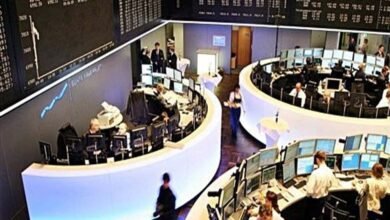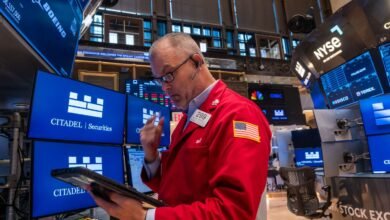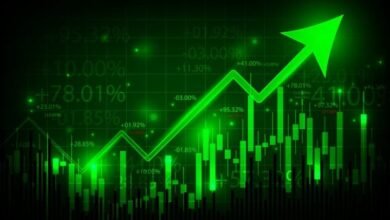What you need to know about futures’ past before adding them to your present

Welcome to Sherwood’s deep dive into futures markets, presented in partnership with
To talk about the financial vehicles known as futures, we need to step back into the past: the distant past of Japan, where the instruments were invented in the 17th century.
The days of futures’ past
It all started with rice. The rice trade — which is also behind the candlesticks in a stock chart — fostered the first futures contracts. Rice was the original way samurai were paid and taxes were levied, and early futures contracts allowed farmers and their buyers to lock in the price for a delivery of rice at a set, future date, allowing the producers to have enough capital to carry them through the harvest season, the samurai to have a stable income, and wholesalers to secure a reliable price that wouldn’t be affected by a bad harvest.
While the contracts aimed to reduce risks for the key parties, that also presented an opportunity for those who were willing to speculate on the underlying asset’s price. Soon, futures contracts themselves were bought and sold, and the contracts expanded to other commodities and beyond.
The modern futures contract
While much has changed — traders don’t necessarily take physical delivery of the goods underlying a futures contract these days — some things have carried on: futures contracts still have a set date that obligates the parties to buy or sell the underlying asset at a predetermined price, but what that asset might be has broadened since the 17th century.
The first futures market in the US opened in Chicago in 1848, which America’s biggest futures marketplace, the Chicago Mercantile Exchange (CME), still calls home.
Underlying assets that underpin modern futures contracts include:
-
Commodities, such as coffee, soybeans, lumber, and corn
-
Natural gas and crude oil
-
Equities and stock indexes, like the S&P 500 and Nasdaq 100
-
Fiat currencies, such as the euro or the yen
-
Cryptocurrencies
-
Metals, like gold, silver, and copper
-
Interest rates
For those who are familiar with trading options, one key difference is that while options are contracts with set dates, they give each side only the “option” to buy or sell at the predetermined price, while futures contracts are an obligation. Let’s dive into the details of what makes up such a contract in modern markets and what you need to know about each aspect.
The five specifications of futures contracts
Futures contracts have five main elements you’ll want to grasp before you place your first order. Because America is the land of golden corn fields, we’ll come back to that as our example in each specification.
-
Contract size: the standard amount of an asset in each contract, which varies from asset to asset. For example, one crude oil contract is always 1,000 barrels, while a standard corn futures contract stands for 5,000 bushels.
-
Contract value: commonly also called “notional value,” this equals the contract size times the current price of the asset. So if corn is trading at $4 a bushel, the notional value of one corn futures contract is $20,000.
-
Tick size: a “tick” is the minimum amount a particular futures contract can fluctuate. This can be in dollars, cents, or even a fraction of a cent, as is the case with corn. The smallest amount a corn contract can fluctuate is by a quarter cent a bushel, or $0.0025. Multiply that by the 5,000 bushels in a corn contract and it equals $12.50, which is the tick value per corn contract.
-
Trading hours: one of the most attractive things about futures to many traders is that futures markets’ expanded hours allows them to act on news or other aftermarket information when the stock market is closed. But they are not 24/7.
-
Equities-based futures markets are typically open from Sunday evening at 5 p.m. CT (remember, many major markets are based in Chicago) until Friday afternoon at 4 p.m. CT, and have a daily 60-minute break.
-
Agricultural futures (like corn) are a bit different. They trade from Sunday through Friday, 7 p.m. to 7:45 a.m., and Monday through Friday, 8:30 a.m. to 1:20 p.m. CT. As you can see, trading corn is a bit trickier time-wise, and if you assume it’s the same as equities futures markets, you could miss an opportunity that may make your corn futures strategy pop.
-
-
Delivery: at the end date of a futures contract, it is either financially settled or physically delivered. Obviously, most traders aren’t actually looking to get 5,000 bushels of corn, but if you’ve ever heard the legend of the McDonald’s McRib being connected to low hog prices, you can understand how real-life restaurant chains would want to buy a lot of lean hog futures contracts when the price was low and lock in that meat deal. The terms of the delivery will be specified in the contract, and luckily for traders, most brokerages won’t allow everyday investors to take delivery in physical form so you won’t end up needing to buy a silo to store that corn.
How to decode a futures listing
Futures contracts look a little different from other things you might trade. On most platforms, futures contracts will be distinguished by a forward slash to differentiate them from similarly named equities. The listings will also end with a letter that indicates the month the contract will expire. Those month codes aren’t intuitive, with January being indicated by F and August by… Q? Here’s the full list for reference.
This is a good place to pause before we dive into the next part, which will explore why futures are useful for modern markets and active traders as well as explain leverage, margin requirements, and the risks involved.
Until then, test your knowledge with our Futures Quiz.






